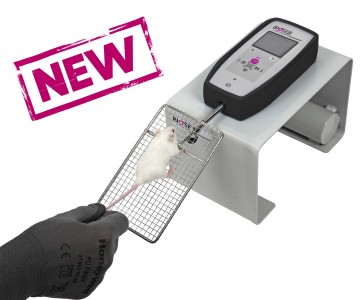Authors
ME Brien, K Hughes, S Girard
Lab
Universite de Montreal, Montreal, QC, Canada
Journal
Scientific Reports
Abstract
Prenatal inflammation negatively affects placental function, subsequently altering fetal development. Pathogen-associated molecular patterns (PAMPs) are used to mimic infections in preclinical models but rarely detected during pregnancy. Our group previously developed an animal model of prenatal exposure to uric acid (endogenous mediator), leading to growth restriction alongside IL-1-driven placental inflammation (Brien et al. in J Immunol 198(1):443Ð451, 2017). Unlike PAMPs, the postnatal impact of prenatal non-pathogenic inflammation is still poorly understood. Therefore, we investigated the effects of prenatal uric acid exposure on postnatal neurodevelopment and the therapeutic potential of the IL-1 receptor antagonist; IL-1Ra. Uric acid induced growth restriction and placental inflammation, which IL-1Ra protected against. Postnatal evaluation of both structural and functional aspects of the brain revealed developmental changes. Both astrogliosis and microgliosis were observed in the hippocampus and white matter at postnatal day (PND)7 with IL-1Ra being protective. Decreased myelin density was observed at PND21, and reduced amount of neuronal precursor cells was observed in the Dentate Gyrus at PND35. Functionally, motor impairments were observed as evaluated with the increased time to fully turn upward (180 degrees) on the inclined plane and the pups were weaker on the grip strength test. Prenatal exposure to sterile inflammation, mimicking most clinical situation, induced growth restriction with negative impact on neurodevelopment. Targeted anti-inflammatory intervention prenatally could offer a strategy to protect brain development during pregnancy.
BIOSEB Instruments Used
Grip strength test (BIO-GS3)
Source :

 Pain - Thermal Allodynia / Hyperalgesia
Pain - Thermal Allodynia / Hyperalgesia Pain - Spontaneous Pain - Postural Deficit
Pain - Spontaneous Pain - Postural Deficit Pain - Mechanical Allodynia / Hyperalgesia
Pain - Mechanical Allodynia / Hyperalgesia Learning/Memory - Attention - Addiction
Learning/Memory - Attention - Addiction Physiology & Respiratory Research
Physiology & Respiratory Research











![Dynamic Weight Bearing 2.0 – Postural Module [Add-on]](https://bioseb.com/733-home_default/dynamic-weight-bearing-20-add-on-postural-module.jpg)
























 Pain
Pain Central Nervous System (CNS)
Central Nervous System (CNS) Neurodegeneration
Neurodegeneration Sensory system
Sensory system Motor control
Motor control Mood Disorders
Mood Disorders Other disorders
Other disorders Muscular system
Muscular system Joints
Joints Metabolism
Metabolism Cross-disciplinary subjects
Cross-disciplinary subjects CONFERENCES & MEETINGS
CONFERENCES & MEETINGS 